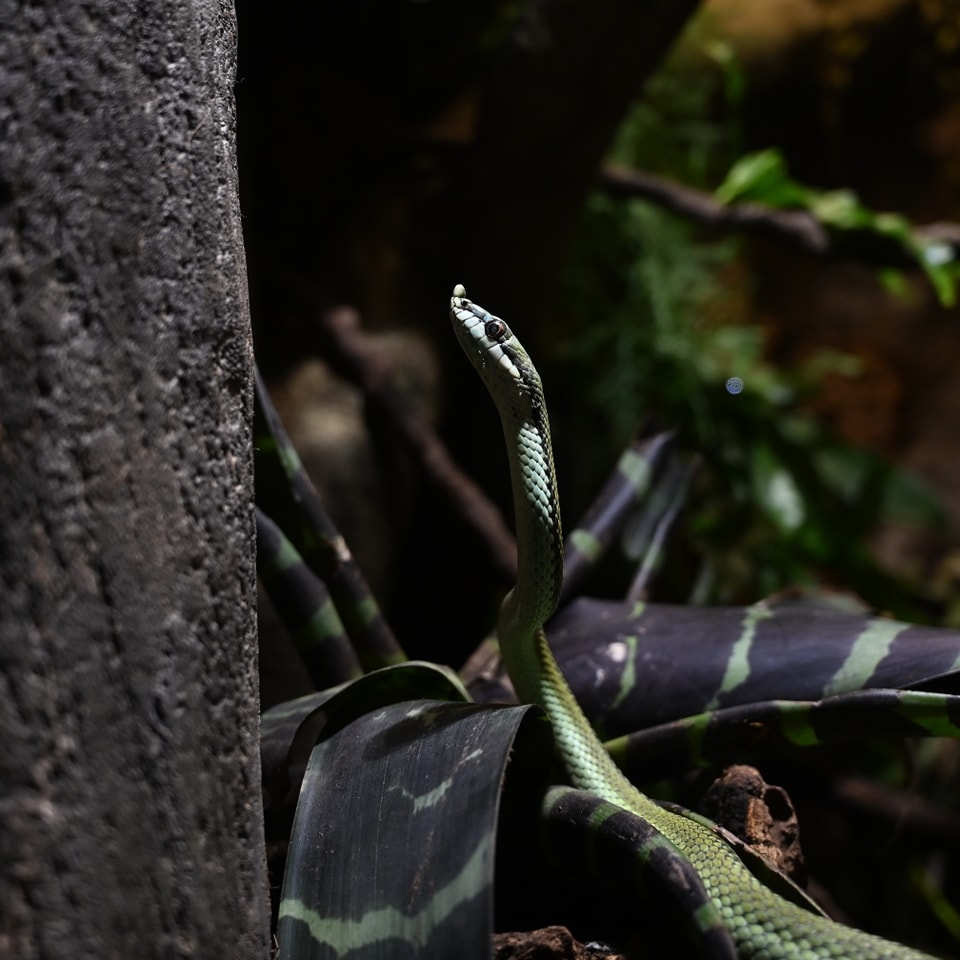- Baron’s green racers’ distinctive snout protrusion and its morphological significance.
- Behavioral insights into Baron’s green racers, including their habitat and diet.
- Comparisons between Baron’s green racers and other snakes with similar anatomical features used for mating.
- Conservation status of Baron’s green racers and efforts to protect their natural habitats.
- The role of zoological institutions in the conservation and study of Baron’s green racers.
Baron’s green racers, known for their striking green coloration, exhibit a unique anatomical feature—an elongation from their snout resembling a pointy nose. This intriguing morphology, while not functionally understood for Baron’s green racers, draws curiosity and scientific fascination. Typically inhabiting tropical regions of Central and South America, they are slender, agile snakes that rely on their ability to blend seamlessly into their verdant environments.
The protrusion from the snout of the Baron’s green racer is visually distinctive, yet it serves no identified purpose for this species. In other snake species, similar features are sometimes utilized during mating rituals, suggesting a possible evolutionary pathway for these protrusions. In Baron’s green racers, the prominent nasal extension may serve as a mere vestige of evolutionary history, or perhaps an adaptation for an obscure biological function yet to be discovered. This morphological feature invites further exploration to determine if it offers any survival advantage, such as sensory enhancement or camouflage.
Apart from their captivating snout, Baron’s green racers exhibit fascinating behavior. They are primarily arboreal and can be found gracefully moving through tree canopies. Their diet mainly consists of small vertebrates, which includes lizards, frogs, and occasionally birds. This species is diurnal, actively hunting during daylight and relying heavily on their vision to detect movement in their surroundings.
Comparatively, there have been observations of other snakes with snout protrusions used effectively during courtship displays. For instance, some species of vine snakes utilize their elongated nose to signal intent to potential mates, through visual cues or tactile interactions. This comparison of functional use underscores the diversity of ecological adaptations evident within the snake family. Understanding these variations helps scientists appreciate adaptation and evolution principles within reptiles.
The conservation status of Baron’s green racers calls for attention even if they are not currently listed as endangered. Habitat loss due to deforestation and urbanization poses a significant threat to their existence in the wild. Efforts to preserve their natural habitat are imperative. Conservationists are advocating for the protection of tropical forests, emphasizing biodiversity’s value not just for reptiles such as Baron’s green racer, but for the entire ecosystem they inhabit. These initiatives are pivotal for maintaining the ecological balance and ensuring that these snakes continue to thrive in their natural surroundings.
Zoological institutions play a crucial role in both the study and conservation of Baron’s green racers. By providing a controlled environment for observation and study, zoos can gather actionable insights into the behavioral patterns and ecological needs of these snakes. Research facilitated by such institutions aids in developing strategies for their preservation. Conservation around this species is further enriched by public education efforts, which increase awareness regarding their ecological significance and the pressing need to preserve their habitats.
In sum, Baron’s green racers are a species rich with fascinating anatomical and ecological attributes. Their snout protrusion invites curiosity as a peculiar feature with undefined function. The broader ecological perspectives concerning their behavior, dietary habits, and habitat contribute valuable insights into their conservation needs. Protecting these racers involves a combined effort between scientific study and habitat preservation, ensuring their contribution to biodiversity is sustained for future generations.
*****
Source Description
Baron’s green racers are best known for the protrusion from their snout that resembles a pointy nose! While it serves no known purpose for this snake, some other snakes have a similar protrusion that is used in mating displays.


